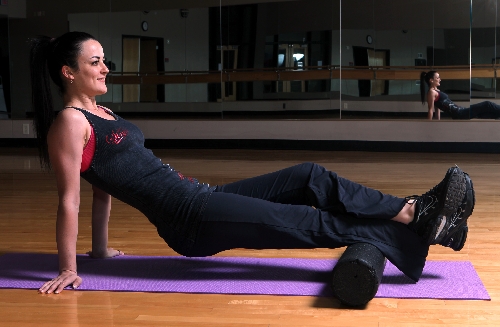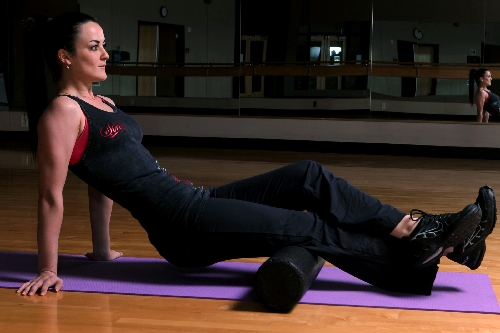That’s how we roll: Easing muscle tension with foam
Today's gyms feature a variety of equipment. Some are large, shiny steel machines with cables, weight stacks and pulleys; some are small and made of foam.
As simple as it appears, the foam roll may be as useful in your fitness routine as any machine or weight.
The first time I foam rolled, a good friend who was a trainer talked me through it.
Even after reading up on it, I still wasn't sure why anyone should roll. Assuming it was for the injured, I figured I didn't need it. I couldn't have been more wrong. I found tight muscles everywhere. My calves were extremely overactive, as were the outside of my thighs. After about two weeks of rolling, I felt like I had new legs.
Tight muscles can happen abruptly or can sneak up on you over time.
Foam rolling, or self-myofascial release, is a stretching technique used to relieve tight muscles. Essentially it is a form of self deep-tissue massage.
When a muscle stretches too far, it becomes tight and overactive. This can appear in the form of a postural deviation. The areas of muscular tightness feel like knots, similar to those in your back when it's tight. The "knots" are myofascial adhesions in the muscles and prohibit proper muscle function. Pressure on the tight spots relaxes the muscle.
The goal of the foam roll is to assist in locating and applying pressure to the adhesions. Rolling allows the muscle to function properly by helping to restore flexibility and function.
Identifying tight muscles can be tricky. Have a trainer at your gym assess your posture to point out which muscles are overactive. Generally, the muscles that are most often tight are the calves, hamstrings, quadriceps, iliotibial and tensor fasciae latae bands (on the outside of the leg) and the lats.
Another reason to roll tight muscles is to prevent injury. If a muscle is tight because of multiple adhesions, taxing it how you normally do might lead to tendon injuries. If the muscle can't stretch and contract the way it should, the next place for it to give way is the attachment sites or the tendons. These injuries can range from a pull to a tear.
The SMR principle can be applied to all overactive muscles. Your gym might even have equipment in addition to the foam roll for SMR use. This equipment may look like a rolling pin or softballs that vary in density.
SMR should be done when muscles are tight. There is no need to roll loose muscles to keep them loose. If you develop overactive muscles, SMR should be used on workout days until the "knots" are gone and before stretching as a warm-up or a cool-down.
For example, if you run two to three times a week, you might develop overactive calf muscles. You should roll each calf and then stretch the calf muscle either before or after your run until the muscle no longer has "tender" areas. It might take a day to two weeks for the muscle to fully relax. You'll notice improvement in performance when compared with running with tight calves.
Chris Huth is a Las Vegas trainer. You can contact him at 702trainer@gmail.com. Before beginning any exercise program, consult your physician.
Photos for this column were taken at UNLV's Student Recreation and Wellness Center. Although the facility's primary clientele is students, faculty and staff, the center also welcomes community members 18 and older at a monthly fee of $25. You can contact the service desk at 774-7100 or by email at srwc.memberships@ unlv.edu.
























